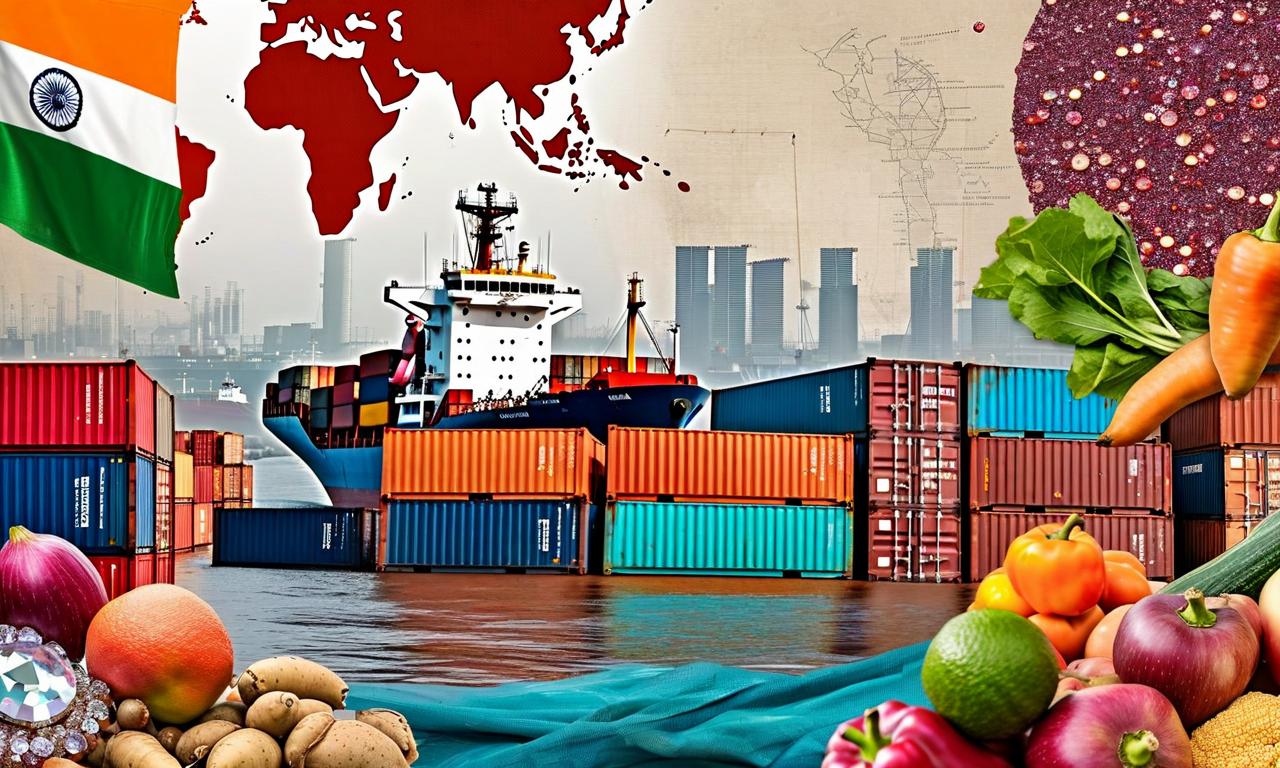US Tariff Hike Threatens $35 Billion in Indian Exports, Government Considers 10-Point Recovery Plan
The US has implemented tariff increases of up to 50% on Indian goods, affecting 55% of India's $87.30 billion merchandise exports to the US. This could potentially eliminate $30-35 billion in overseas sales, impacting core export sectors like textiles, gems and jewellery, and agriculture. The move is expected to reduce India's GDP growth by nearly one percentage point. In response, a 10-point recovery plan has been proposed, including export market diversification, infrastructure improvements, and regulatory reforms.

*this image is generated using AI for illustrative purposes only.
The United States has implemented significant tariff increases on Indian goods, with potential rates soaring up to 50%. This move is set to impact core export sectors of India, including textiles, gems and jewellery, marine products, auto components, and agriculture.
Impact on Indian Exports
The new tariffs are expected to affect approximately 55% of India's $87.30 billion merchandise exports to the US. Last year, these exports contributed to a substantial $45.80 billion trade surplus for India. However, studies suggest that these steep export levies could potentially eliminate $30-35 billion in overseas sales, posing a significant threat to India's economic growth.
Economic Implications
The tariff hike's ripple effects on the Indian economy could be substantial:
- GDP Growth: Forecasts suggest a potential reduction in GDP growth by nearly one percentage point.
- FY26 Growth Projections: Growth forecasts for the fiscal year 2026 have been revised downward by 30 basis points.
- Additional Economic Drag: Further economic slowdown of 0.2-0.5% is possible.
Foreign Investment Concerns
The tariff situation appears to be influencing foreign portfolio investors' sentiment:
- August: Withdrawal of $2.00 billion from Indian equities
- July: Similar outflows of $2.00 billion were recorded
Proposed 10-Point Recovery Plan
To counter these challenges, a comprehensive 10-point plan has been proposed:
- Geographical Export Diversification: Focus on expanding markets in Africa and West Asia.
- Transport Infrastructure Overhaul: Aim to reduce logistics costs from the current 8-9% of GDP.
- Tourism Infrastructure Development: Enhance facilities to boost the tourism sector.
- Regulatory Reforms: Attract foreign investment through improved regulations.
- Agricultural Law Reforms: Modernize agricultural practices and regulations.
- Land and Labor Law Modernization: Update laws to improve ease of doing business.
- Tax Simplification: Streamline GST and introduce the new Income Tax Bill 2025.
- Strategic Divestment: Sell state assets to generate revenue and improve efficiency.
- Leveraging Remittances: Capitalize on the record $136.00 billion in remittances.
- Expanding Global Capability Centres: Increase from the current 1,700 to a projected 2,100-2,200 by 2030.
This multi-faceted approach aims to mitigate the impact of US tariffs and strengthen India's economic resilience. The success of these measures will be crucial in navigating the challenges posed by the changing global trade landscape and maintaining India's growth trajectory.
As the situation develops, businesses and policymakers will need to closely monitor the implementation and effectiveness of these proposed measures to ensure India's economic stability and growth in the face of external pressures.
























